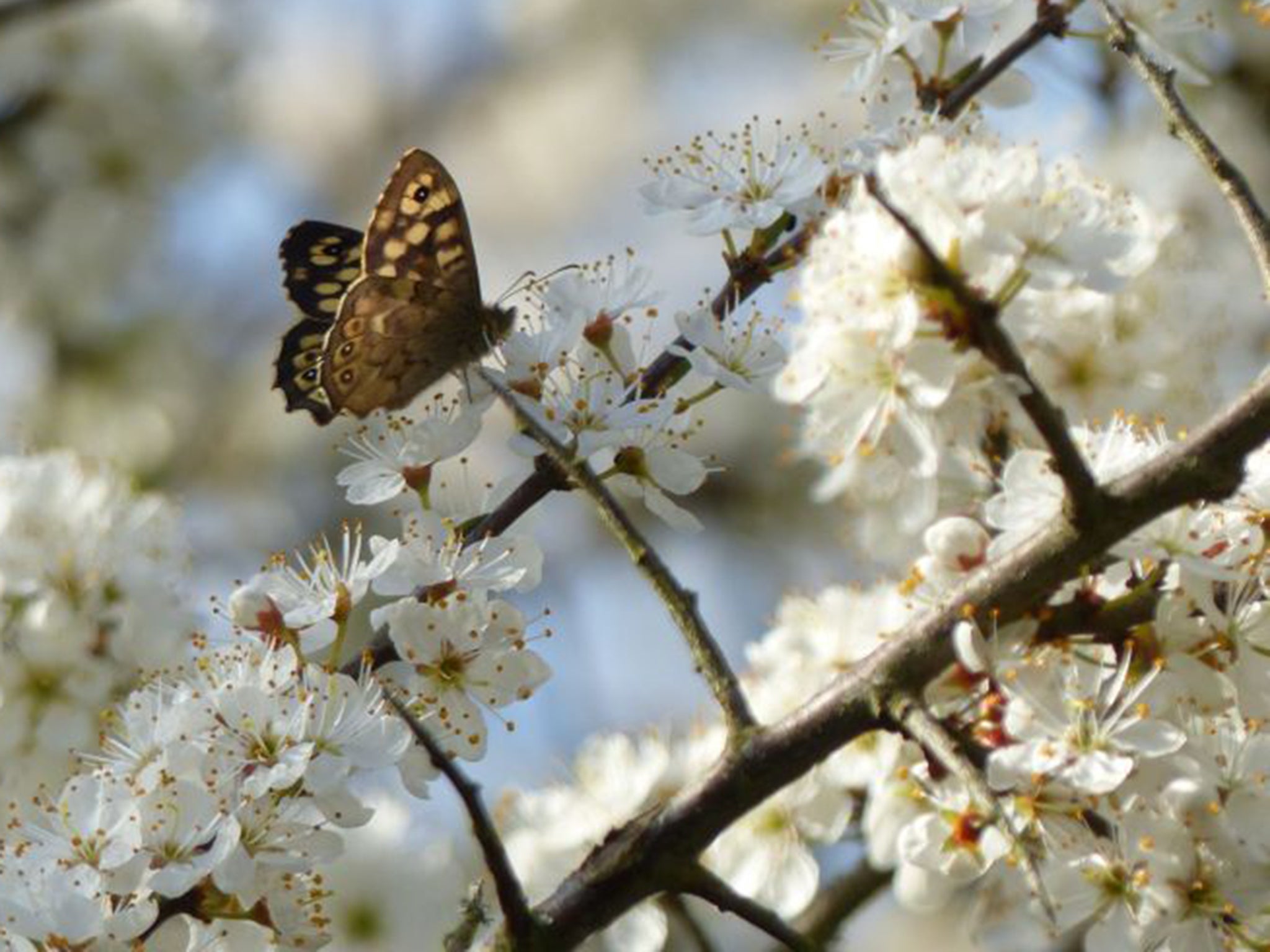Public asked to keep a look out for speckled wood butterfly in woodland areas
Scientists are keen to understand why the speckled wood is thriving at a time when three quarters of the UK's butterflies are in decline

People heading down to the woods are being asked to look out for a butterfly on the rise because of climate change.
Experts want the public to help them chart the progress of the speckled wood butterfly which has seen a 71 per cent increase in spread of habitat and a 84 per cent boost in numbers in the last 40 years.
As the climate has warmed, the butterfly has spread to colonise East Anglia, the Midlands and much of northern England, wildlife charity Butterfly Conservation said.
And it has become much more widespread in Scotland where once it was restricted to the mildest areas of the west coast and the Moray Firth.
The speckled wood is aptly named, flying in partially shaded woodlands with dappled sunlight.
As part of the annual Big Butterfly Count, in which members of the public count common butterfly species to help the experts chart their fortunes, the conservation charity is asking people to record the speckled wood in woodlands.
Scientists are keen to understand why the speckled wood is thriving at a time when three quarters of the UK's butterflies are in decline, with many widespread species experiencing worrying slumps.
The speckled wood's spread has been limited in areas where woodlands have been destroyed, Butterfly Conservation said.
Woodlands are a key habitat not just for speckled woods but for threatened butterflies such as pearl-bordered fritillary, wood white and black hairstreak and common species in the Big Butterfly Count including ringlet, brimstone, comma and holly blue.
Butterfly Conservation president Sir David Attenborough said: "The sight of a Speckled Wood flitting through the dappled sunlight of woodland glade is a memorable high summer spectacle.
"We need more information about how widespread species are faring in this vitally important butterfly habitat.
"Sadly, our woodlands face a multitude of threats from habitat loss to climate change and various tree diseases."
The naturalist and TV presenter urged people to take part in the Big Butterfly Count, spending 15 minutes counting butterflies in a local wood to help build a picture of how to protect woodland species.
Butterfly Conservation's head of recording Richard Fox said: "Sadly, the speckled wood is one of relatively few butterflies that have fared well over recent decades.
"As well as being a welcome new addition to woodlands and gardens in many parts of the UK, the butterfly provides a fantastic opportunity to study the impact of climate change on our native species.
"Not only has the Speckled Wood spread northwards, it has become less dependent on dense woodland and has even evolved greater flight abilities."
With just 4 per cent of Big Butterfly Counts last year taking place in woodland, conservationists are urging people to take part in an extra count in a local wood.
The Big Butterfly Count runs until August 7, and people can take part by finding a sunny spot, spending 15 minutes counting the butterflies they see and then submitting sightings online at http://www.bigbutterflycount.org or via the count's app.
Press Association
Join our commenting forum
Join thought-provoking conversations, follow other Independent readers and see their replies
Comments